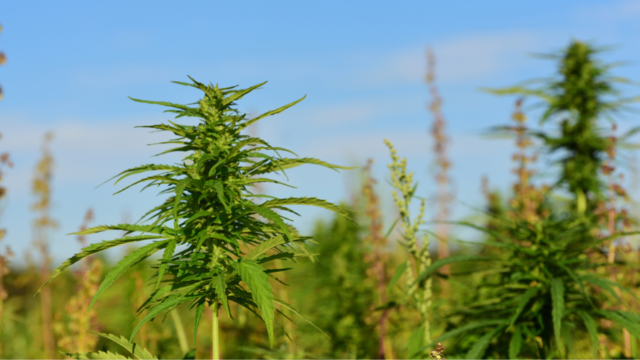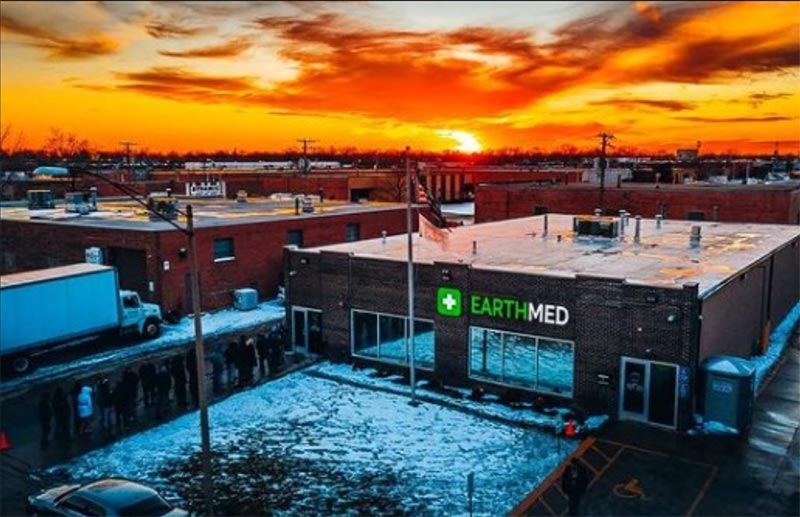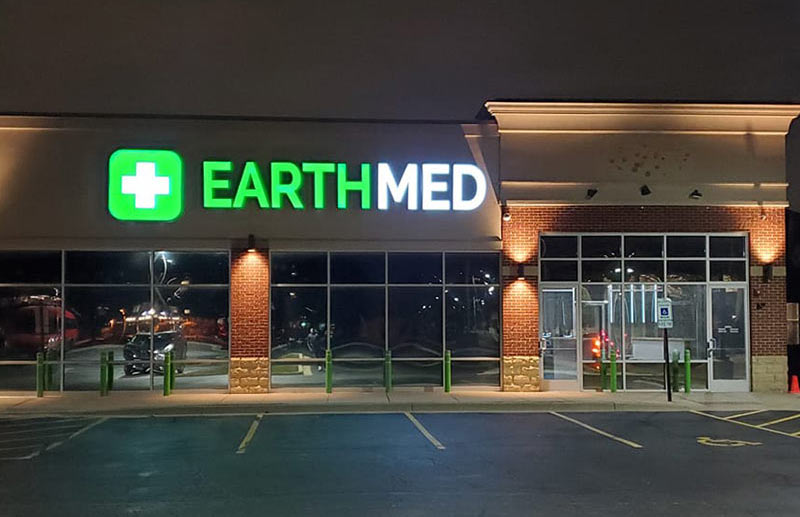Are you at least 21 years of age or hold a valid medical marijuana card?
Daily Specials
{{ special.title }}
{{ special.description }}
*{{ note }}EARTHMED BLOG

Cannabis Plant Anatomy 101: From Bracts to Xylem

TL;DR: What’s Inside the Weed Plant You Love
The cannabis plant is more than just buds and leaves. Understanding the different cannabis plant parts helps you know what you're smoking and how each part contributes to the final product. From roots to trichomes, every part of the marijuana plant plays a role in creating the flower we grind, roll, vape, or infuse. If you've ever wondered what makes your favorite nug sticky, aromatic, and potent, this guide breaks it all down from bracts to xylem.
Why Learn Cannabis Plant Anatomy?
Whether you're a seasoned toker, medical user, or just cannabis-curious, knowing your way around the plant's structure helps you better understand what you’re smoking and why it works the way it does. Learning cannabis plant anatomy also deepens your appreciation and gives you a head start if you ever want to grow your own.
The Basics: Parts of the Cannabis Plant
Bracts
Bracts are those small, teardrop-shaped green leaves that form the bud. They house the flower’s reproductive parts and are loaded with cannabinoids like THC. If you’re chasing potency, the bracts are where the good stuff lives.
Branches
Branches grow out from the main stem and support the fan leaves and colas. They carry nutrients and also hold the weight of the flower during bloom. Strong branches mean a more productive plant.
Calyx
The calyx is hidden inside the bracts. It’s a translucent layer that wraps around the ovule, helping form the flower. While small, it plays a big part in supporting bud growth and reproduction.
Cola
The cola is the big, sticky top bud that gets the most light and love. It’s a dense cluster of flowers that forms at the top of the plant. Smaller colas form along the branches too, but the top one usually steals the show.
Cotyledons
These are the first tiny leaves that pop out when a cannabis seed germinates. They don’t stick around long, but they give the seedling its initial energy boost through photosynthesis.
Leaf Talk: Cannabis Leaf Anatomy
Fan Leaves
These are the iconic cannabis leaves most people recognize. They have long fingers and wide blades that absorb light and help regulate water. Indica plants tend to have broader leaves, while sativas are more slender. Fan leaves aren’t typically smoked, but their health gives growers key insights into how the plant is doing.
Deep Dive: Flower Structure
Flowers or Buds
This is the main attraction and the heart of cannabis flower anatomy. Only female plants produce buds, and they’re packed with cannabinoids, terpenes, and trichomes. These dense little clusters are harvested, dried, and used in everything from joints to oils. A frosty flower is often a potent one, and the best buds strike a balance between appearance, aroma, and cannabinoid content.
Pistils and Stigmas
Pistils are the plant’s reproductive organs, and stigmas are the little hair-like strands that poke out. These change colors from white to orange to brown as the plant matures. While they don’t affect potency, they’re a good indicator of plant maturity.
Below the Surface: Roots and Seedlings
Roots
The roots anchor the plant and absorb water and nutrients. It all starts with a taproot, which grows down into the soil and spreads out into smaller rootlets. Healthy roots mean better nutrient uptake and more resilient plants.
Seedlings
Once a seed has sprouted and cotyledons have appeared, the plant is officially a seedling. At this stage, it’s vulnerable and needs careful watering and lots of light. The first true fan leaves signal that the plant is ready to grow up.
Seeds
Cannabis seeds come with both male and female DNA. Germination activates the plant’s growth, but whether it becomes flower-worthy or pollen-producing depends on its sex. Most growers prefer feminized seeds since only female plants produce usable flower.
Stems, Nodes, and Vascular System
Stems
The stem is the plant’s backbone. It holds up everything and contains the vascular system that moves nutrients and water around. Growers often top stems to control height and encourage more branching, which leads to more flower sites.
Nodes
Nodes are where branches and leaves grow from the stem. This is also where you’ll find signs of the plant’s sex, with male pollen sacs or female pistils appearing as it matures.
Phloem and Xylem
These are the plant’s internal highways. Xylem moves water from the roots to the rest of the plant, while phloem distributes the sugars and nutrients created by photosynthesis. Together, they keep the plant fed and hydrated.
Trichomes, Sugar Leaves, and More
Trichomes
Trichomes are the tiny crystal-like structures covering buds and nearby leaves. They produce the sticky resin filled with THC, CBD, and aromatic terpenes. Trichomes are also a defense system, protecting the plant from pests and sun damage.
Sugar Leaves
Sugar leaves are small, trichome-covered leaves that grow within cannabis buds. While not as potent as the flower itself, they still contain cannabinoids and are commonly used to make edibles, hash, and concentrates. Because of their resin content, sugar leaves are trimmed from the buds after harvest but rarely smoked.
Frequently Asked Questions About Cannabis Anatomy
What are the main parts of the cannabis plant?
The cannabis plant includes roots, stems, branches, leaves, nodes, flowers, bracts, pistils, trichomes, and seeds. Each part plays a unique role in the plant’s growth and potency.
What’s the difference between bracts and calyxes?
Bracts are the outer leaf structures that form the bud, while the calyx is the inner part that surrounds the ovule. They’re tightly linked and essential for flower development.
Which part of the plant do we smoke?
We smoke the dried flowers or buds of the female cannabis plant. These parts contain the highest levels of cannabinoids like THC and CBD.
Where is THC produced in the plant?
THC is produced in the trichomes, which are found on the surface of buds, bracts, and some sugar leaves. The more trichomes, the more potent the flower.
Let’s Be Blunt: Every Part of the Plant Has a Purpose
From the baby cotyledons to the frosty trichomes, cannabis plant anatomy is a full-body operation. Whether you’re growing, trimming, or just admiring your stash from a local dispensary, knowing what each part of the marijuana plant does makes you a more informed and appreciative user.
Got a favorite part of the cannabis plant or a burning question about its anatomy? Hit me up on social media, and let’s spark up a conversation about it.
{{ locations[0].name }}
{{ locations[0].address }}{{ locations[0].city }}, {{ locations[0].state }} {{ locations[0].zip }}
{{ locations[0].phone }}
Hours
Sun: {{ locations[0].hours_recreational.Sunday }}Mon: {{ locations[0].hours_recreational.Monday }}
Tue: {{ locations[0].hours_recreational.Tuesday }}
Wed: {{ locations[0].hours_recreational.Wednesday }}
Thu: {{ locations[0].hours_recreational.Thursday }}
Fri: {{ locations[0].hours_recreational.Friday }}
Sat: {{ locations[0].hours_recreational.Saturday }}
{{ locations[1].name }}
{{ locations[1].address }}{{ locations[1].city }}, {{ locations[1].state }} {{ locations[1].zip }}
{{ locations[1].phone }}
Hours
Sun: {{ locations[1].hours_recreational.Sunday }}Mon: {{ locations[1].hours_recreational.Monday }}
Tue: {{ locations[1].hours_recreational.Tuesday }}
Wed: {{ locations[1].hours_recreational.Wednesday }}
Thu: {{ locations[1].hours_recreational.Thursday }}
Fri: {{ locations[1].hours_recreational.Friday }}
Sat: {{ locations[1].hours_recreational.Saturday }}






